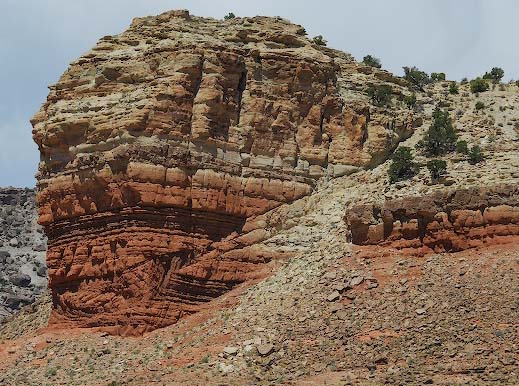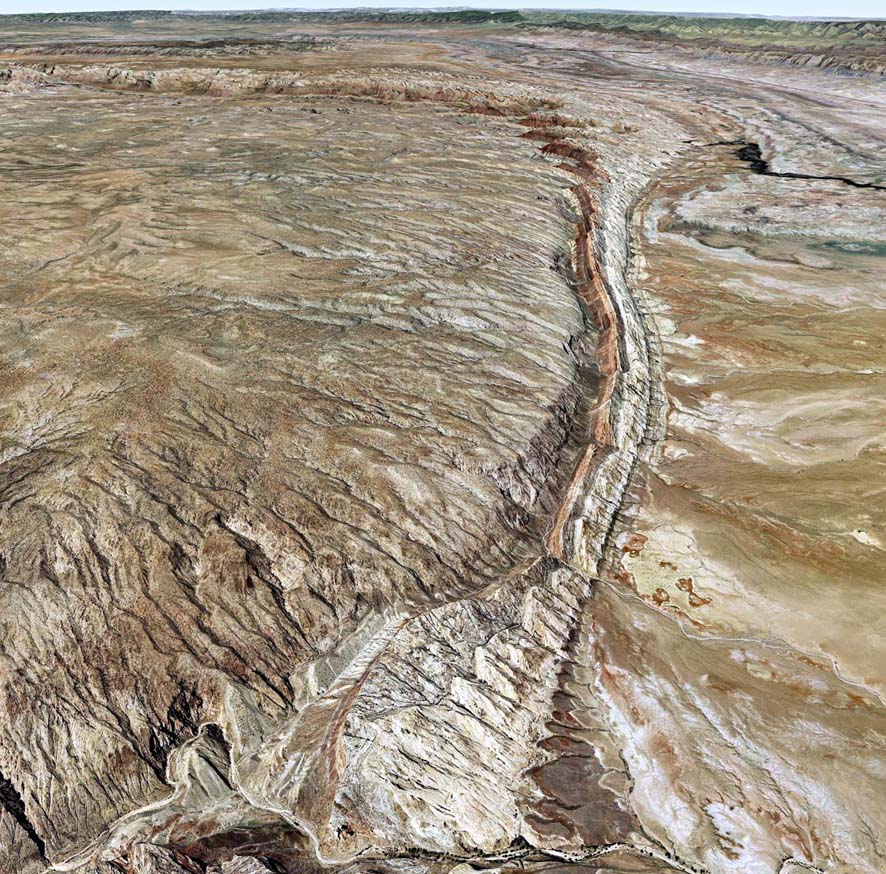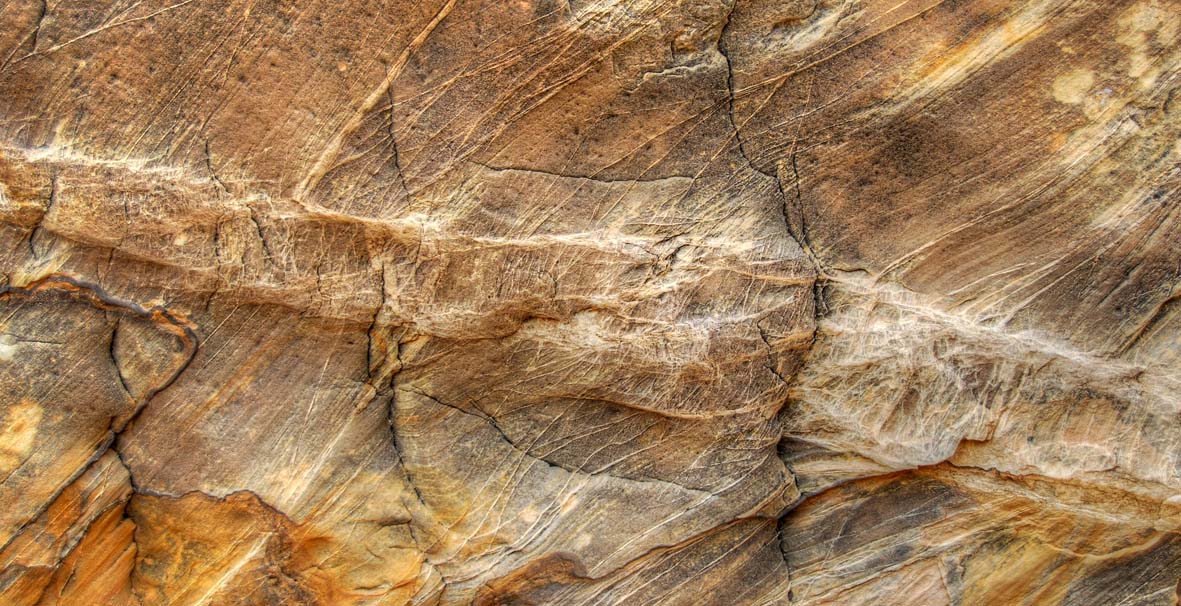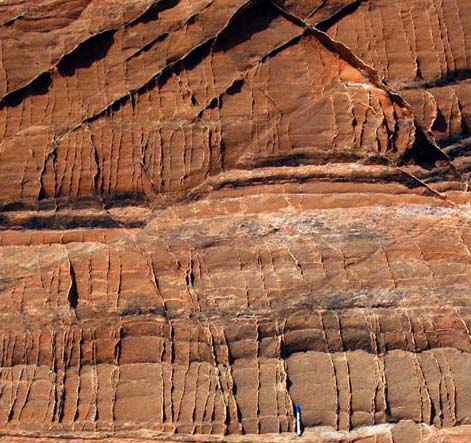
Background/motivation
 After a lot of researh on extensional faults and related structures in porous sandstone , we decided to study how porous sandstones are deformed in the contractional regime. There are obviously many similarities between the two regimes, but are there differences that would be worth knowing about? Do the deformation bands look the same? Are they more easily affected by cataclasis during contraction? What about the distribution of the bands in various contractional settings? We will explore these and other related question through field-based studies and numerical modeling.
After a lot of researh on extensional faults and related structures in porous sandstone , we decided to study how porous sandstones are deformed in the contractional regime. There are obviously many similarities between the two regimes, but are there differences that would be worth knowing about? Do the deformation bands look the same? Are they more easily affected by cataclasis during contraction? What about the distribution of the bands in various contractional settings? We will explore these and other related question through field-based studies and numerical modeling.
Photo: Reverse faults in Entrada Sandstone, San Rafael Swell, Utah.
Fault propagation folding above reverse faults
 Photo: San Rafael Reef – a monocline caused by an underlying steep reverse fault.
Photo: San Rafael Reef – a monocline caused by an underlying steep reverse fault.
Forced folding is quite common on the Colorado Plateau, where porous sandstones are abundant. This makes this area a good one for studying the related deformation of sandstones. We are focusing on the San Rafael Reef, the East Kaibab Monocline and the Uncompaghre Uplift. Our goal is to correlate strain/layer rotation with deformation band development and try to say something about consequences for fluid flow in a reservoir situation.

Photo: Deformation band shear zone in the San Rafael Reef fold. We find such zones to be common in such contractional settings.
Thrust settings
The movement of huge thrust sheets above porous sandstone is an exiting situation that occurs several places. We are focusing on SE Nevada where the Aztec Sandstone (Navajo Sandstone equivalent) has been overrun by older carbonates. An interesting sequence of events has created various types of deformation bands and fault rocks, and the cementation inolved is also being studied.

Photo of the Muddy Mountain thrust, separating lower Paleozoic carbonates from underlying Aztec Sandstone.
Publications from this project
Fossen, H., Schultz, R. & Torabi, A. 2011: Conditions and implications for compaction band formation in the Navajo Sandstone, Utah. Journal of structural geology 33, 1477-1490.
Fossen, H. & Rotevatn, A. 2012: Characterization of deformation bands associated with normal and reverse stress states in the Navajo Sandstone, Utah: Discussion. AAPG Bulletin 96, 869-876.
Gregory Ballas, G., Solivaa, R., Sizunb, J-P., Fossen, H., Benedicto, A., & Skurtveit, E. 2013: Shear-enhanced compaction bands formed at shallow burial conditions; implications for fluid flow (Provence, France). Journal of Structural Geology 47, 3-15.
Poster, Zuluaga et al., 2013
Who is involved?
Haakon Fossen, Univ. of Bergen (principal investigator)
Atle Rotevatn, Univ. of Bergen
Roger Soliva
, Univ. of Montpellier
Richard A. Schultz, PhillipsConoco
Luisa Fernanda Zuluaga (PhD student)
Gregory Ballas (PhD student)
Christian Rønnevik (MS student)
Compaction bands
Compaction bands, i.e. deformation bands that showno evidence of shear offset, just closing mode displacement, have so far only been found in areas of contractional deformation. The reason for this may be that their formation requires relatively high stress and at the same time poorly lithified sand(stone) with very high porosity.

Learn more about deformation bands
Read this review article.
